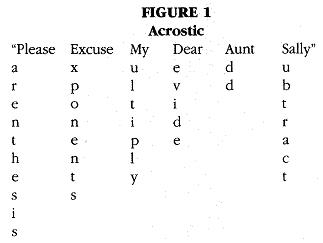Westside Toastmasters is located in Los Angeles and Santa Monica, California
Try these proven strategies.
If a Toastmaster speaks to an audience and nobody remembers what was said, was the Toastmaster really there? We need to ask ourselves if what we say is important. If not, why are we speaking?
If our message is important, one of our goals should be for people to remember what we said. We have many tools and strategies to accomplish this at our disposal. We can use humor, vocal variety, eye contact, and a repeated message or phrase. But an even more powerful approach is available to us.
As a special-education teacher, I'm often asked to help after other teachers and parents have "tried everything." Most of the time I'll have dozens of research-proven strategies that have never been attempted by those seeking help. Most people in the fields of medicine or business wouldn't dream of using methods that haven't been proven scientifically sound. But often in education, as in public speaking, we tend to use the same methods over and over again without consulting the research. Yet we wonder why our listeners don't remember or care about what we say!
After trying my suggested strategies, most kids achieve more then many people expected. My advice, "There are a million ways to teach poorly, but only a few proven ways that are effective." Use powerful strategies to get powerful results.
I apply many of these same strategies to my Toastmasters speeches. If I want people to remember my speech, my secret is to use the most powerful memory strategy known to science ... mnemonics (new-mon-ics). Use one of the following four different mnemonic strategies in your next speech and people will remember it.
ACRONYM
This simple device groups the first letter of words in a list to make a new word or acronym. By remembering one simple word, your audience automatically memorizes all the words in your list.
During one of my speeches, I wanted people to remember all the colors of the rainbow - no small task. I told them a story of how a professor, Dr. Biv, used a prism to sort light into a rainbow of color. This led one student to say to the professor, "Gee Roy that's beautiful." I told my audience that from now on, they too could use the professor's name, ROY G. BIV, to remember that the colors in a rainbow: Red, Orange, Yellow, Green, Blue, Indigo and Violet.
ACROSTIC
Use a short descriptive phrase - in the form of an acrostic - to help remember lists. The first letter of each word in the phrase is a cue to remember a word from a list. A math teacher once complained to me that none of her students could remember the correct order for solving certain math problems. I told her about Aunt Sally, who as an adult went back to school and was so afraid of failing her math class that she asked her doctor, also her niece, to write a note to her teacher. Her niece simply wrote, "Please Excuse My Dear Aunt Sally." The note helped her pass the exam, because the easily-remembered message was really an acrostic for the correct order of math operations: The first operations to solve are any numbers in Parenthesis. Next, do the numbers with Exponents. Then, Multiply or Divide. And finally, do all of the Addition and Subtraction problems.

KEYWORD
Have you ever needed to use technical words or jargon as part of your speech? Sure, we try to avoid complicated words if we can, but sometimes we need to use specific words, and we want our audience to not only remember them, but remember what they mean. Lucky for us, there is the keyword method. At first this method may seem elaborate, but after you explain it once to your audience, they won't be able to stop themselves from remembering your word.
Here's how to use the keyword method: First, a word that sounds like the target word is pictured and paired with the target word for easier recognition. Follow these three steps to make up your own keyword:
1. In order to teach that bliss means happy, pair bliss with kiss.
2. Reconstruct a picture of a boy with a smile getting kissed by a girl.
3. To remember that bliss equals happy, retrieve the memory of the happy boy getting a kiss.
Forevermore, if your audience needs to remember bliss, they'll have the picture of a boy getting kissed to remind them of happiness or blissfulness.
PEG WORD
It seems that everywhere we turn, we need to remember facts and lists of numbers. In science we need to remember that all insects have six legs, but spiders have eight legs. In baseball, there are nine people on the field, while in basketball only five players are allowed on the court. And in Toastmasters we need to remember that we must complete 10 speeches to earn a CC, and that there are 10 criteria for the Distinguished Club Program.
How can we remember all of these facts and numbers? It's easy when you use the most powerful memory strategy - mnemonics! The pegword method uses the following rhyming words to remember numbered or ordered information: 1=bun, 2=shoe, 3=tree, 4=door, 5=hive, 6=sticks, 7=heaven, 8=gate, 9=vine, 10=hen.
These steps are easy! If you need to remember the number of players on a baseball field, think of the vines on the wall at Wrigley Field in Chicago to remind you that baseball requires nine players. To remember that we need ten speeches to earn a CC award, picture a hen on a lectern!
Vines = nine players on the field!
Hen = Ten speeches needed for CC award!
Now don't laugh; these are serious solutions to making your speeches memorable. If you still don't believe me, try forgetting the order of math operations. Dear Aunt Sally doesn't have an excuse, and now neither do you!
By Daniel_Golchak
